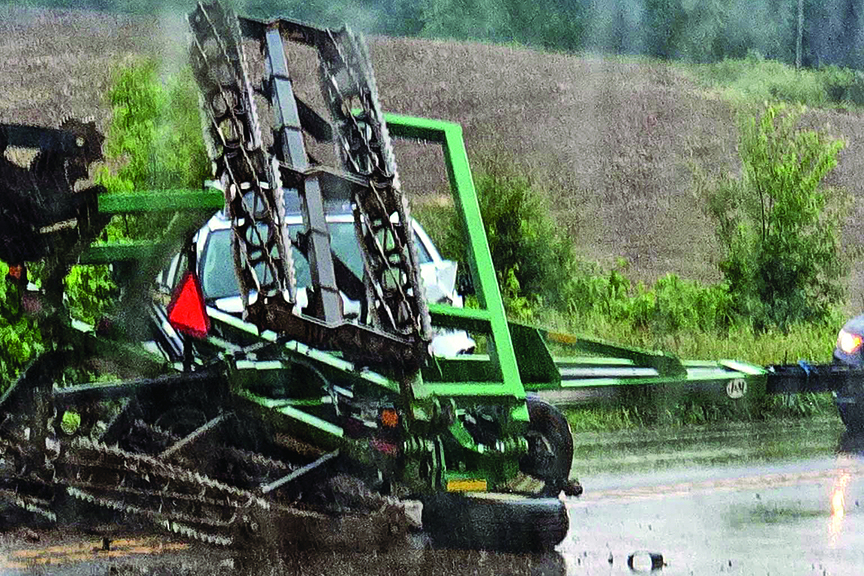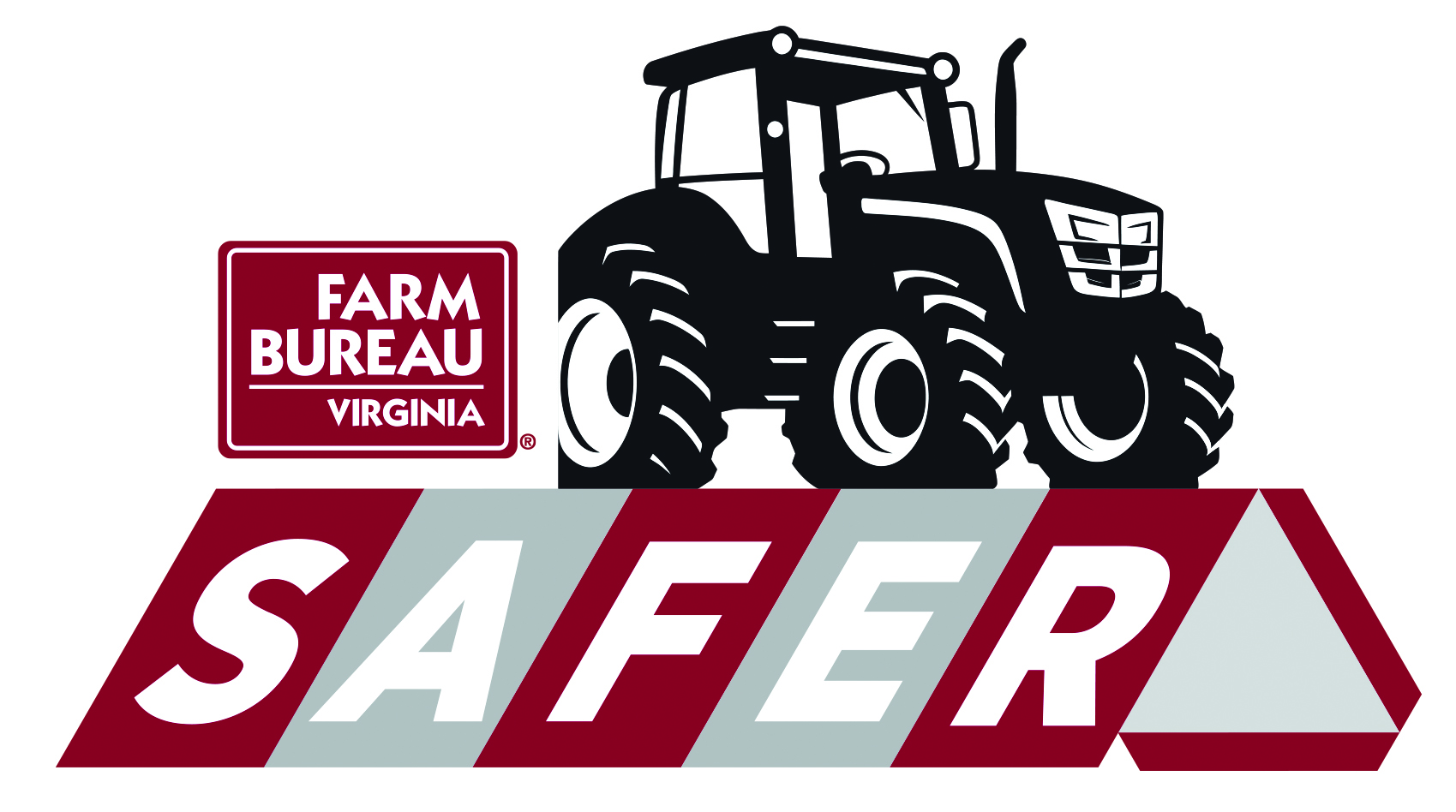Watch for slow-moving equipment on rural roads
September 2025

by Nicole Zema, Virginia Farm Bureau Federation
Giving farmers the space to do their jobs and provide for their families means you can continue to do the same.
On June 6, on Route 522 in Orange County, a motorist collided with a planter belonging to Marshall Dairy Inc.
The motorist was injured in the rear collision that also mangled the dairy’s planting equipment. Fortunately, the tractor operator was unharmed, although the planter required repairs, delaying corn planting for several days.
“That highway is used as an alternate route, and drivers who aren’t familiar with it don’t realize how much farming activity goes on,” says Deanne Marshall, assistant manager of the family’s dairy.

A scene from the June 6 collision between a motorist and a Marshall Dairy Inc. planter
“Please slow down and stay alert when approaching farm equipment on the road,” she adds. “Your patience and caution save lives and keep farmers safe while we work to feed our community.”
Fall harvest season is the busiest for many farmers, who likely don’t have the luxury of cultivating all their acreage on one contiguous farm. Across Virginia, crop harvests begin in late summer and continue into the cooler weeks of fall, requiring use of roadways to move heavy equipment to access different tracts of farmland.
“If you can’t see a farmer, then they can’t see you,” notes Matt Nuckols, chair of the Virginia Farm Bureau Farm Safety Program. “And besides, it’s illegal to pass on a roadway with a double solid line — even if the driver ahead of you is going extremely slow.”
Shoulder conditions may make it unsafe for the farmer to pull heavy equipment to the side of the road. However, many farm fields are less than a couple of miles apart, he says, so motorists should practice patience, as farm equipment will soon turn off the road.
Even if it seems safe to pass, Nuckols urges motorists to make sure they know the farmer’s intentions before passing. Equipment operators sometimes use hand signals in the absence of signal lights.
Nuckols recalls a farmer telling him about a time he stuck his left arm straight out of his tractor window to indicate he was going to make a left turn. The motorist behind him thought he was signaling for him to pass and stepped on the gas.
The results of such crashes “are disastrous,” Nuckols says. “And because farm equipment is so large, the car may take the brunt of the damage.”
Marshall agrees that farm equipment takes up space on roadways and moves slowly. “But we are not trying to hold you up,” she says. “We’re simply doing our job.”

The Virginia Farm Bureau Farm Safety Program has started a new initiative — Safety Awareness for Farm Equipment on Roadways, or SAFER.
The initiative kicks off with a contest inviting community groups and civic and youth organizations to create visual dis- plays, media campaigns and educational materials that depict the size difference between farm equipment and regular vehicles. The goal is to educate drivers about the presence of farm equipment on roadways.
The contest runs through Oct. 31, and winners will be eligible for cash prizes.
For details, visit vafb.com/safety.
